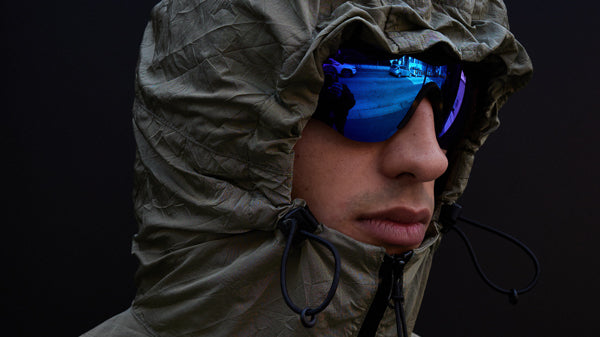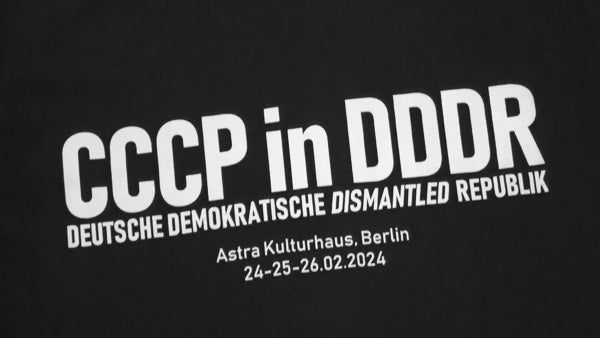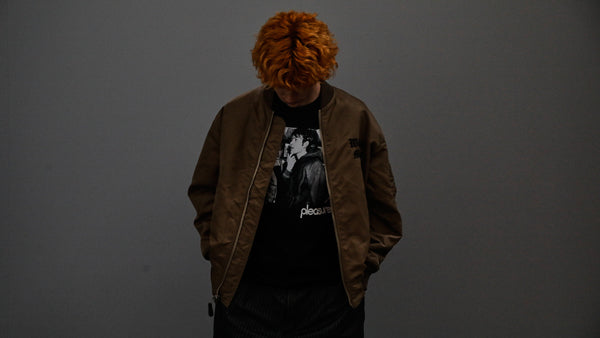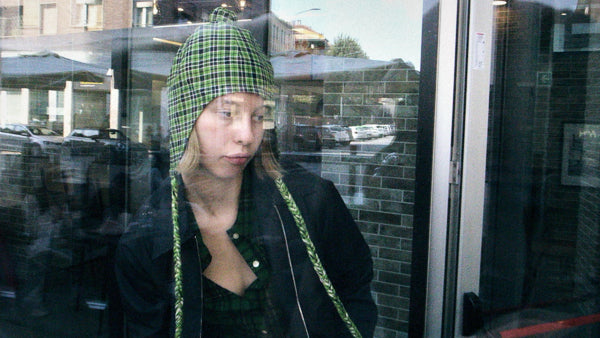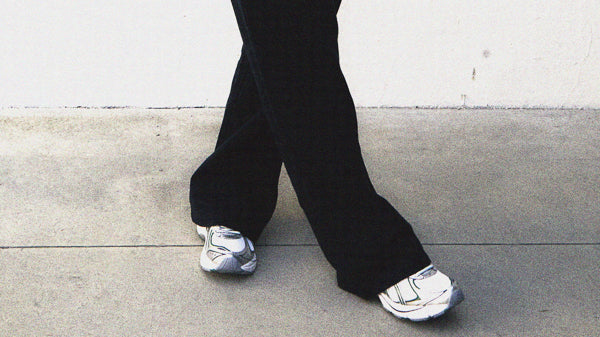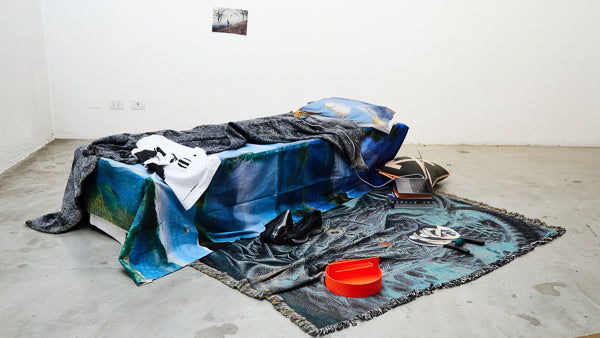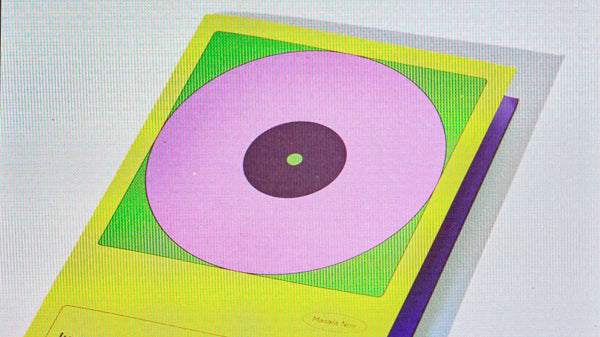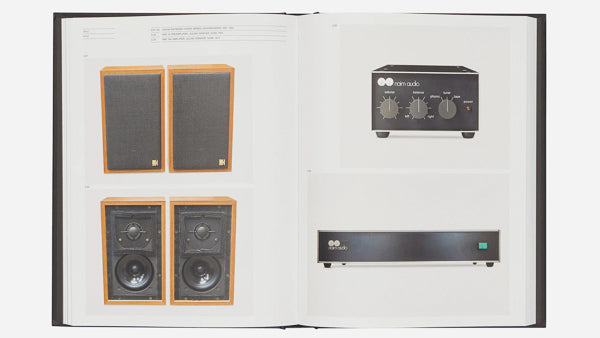CULTURE 24.11.23
TWO SULTANS
Written by: bruce Sterling
IN PARTNERSHIP WITH: ZERO
When Peter Lomborn Wison arrived at COX18 in 1997, invited by Decoder magazine to the Calusca, Primo Moroni’s historic bookstore – the epicenter of underground, leftist, anarchist and counterculture movements from the Lead Years to the present – he had already met Adam Yahiye Gadahn.
Wilson was an American anarchist author and poet, primarily known for his concept of Temporary Autonomous Zones: short-lived spaces which elude formal structures of control; Gadahn was an American senior operative, cultural interpreter, spokesman and media advisor for the Islamist group al-Qaeda, as well as a prolific noise musician. In historical retrospect, it is not clear how these two American Muslim converts became so emotionally close. It seems that they first became close during the period 1991-1993, between the publication of Wilson’s TAZ: Ontological Anarchy and Poetic Terrorism, and the first World Trade Centre bombing, carried out by Abdel Rahman in 1993.
Wilson was the much older man, and he shared many of Gadhan’s esoteric interests – not just in Muslim mysticism, but in homemade noise-tape cassettes and countercultural fanzine publishing. Except for occasional physical liaisons – always very discreet – Wilson and Gadahn always communicated via printed fanzines. Repeatedly, they would trade antique copies of Carl Barks Scrooge McDuck comics, valuable Disney collectors items which they would discreetly deface with long messages hand-written in invisible ink. Whenever Gadahn’s stashes of Disney comics were discovered during al Qaeda anti-terror raids, they were simply thrown away by unbelieving CIA and Mossad operatives. No investigator ever recognized the hidden intimacy of Wilson and Gadahn. Especially, it did not occur to them that Wilson was methodically indoctrinated al Qaeda’s top English-language propaganda operative with his own, unique anarchist beliefs.
«Wilson was methodically indoctrinated al Qaeda’s top English-language propaganda operative with his own, unique anarchist beliefs.»
As for Wilson himself, it seems clear that he never believed that Al Qaeda existed. Instead he assessed the so-called “Base” – al “Qaeda” – as a temporary autonomous zone. Wilson considered the likes of Osama bin Laden and XY to be wealthy media dilettantes, rather than serious religious thinkers like himself, and his fellow explorers in the “Noble Moors”, “Moorish Orthodox Church”, and “League of Spiritual Discovery”.
Al Qaeda was founded in Peshawar in 1998; Wilson himself spent a lot of time in Pakistan, especially the huge city of Quetta. As a Quetta man-about-town, Wilson was far more immersed in Pakistani daily life than any millionaire Arab oil sheik lurking in rural Afghanistan. Quetta was a colossal metropolis, a genuine Third World every-town, and yet daily life there featured what Wilson called “empirical freedom”. If two American men met there, for long, tender conferences about spiritual liberation and the proper use of psychedelic substances, no one would ever look twice. Due to Pakistani state failure and the indifference of everyone else, Quetta, city of romance, existed in functional anarchism. In a world of globalized surveillance and documentary authoritarianism, it offered a way out and forward , through what Wilson called «An unseen politics of the heart».
Wilson’s book Pirate Utopia appeared in 1999; it made some brief mention of historical pirates, but spent most of its time carefully describing the experiential realities of “post-state” jihadi resistance in Afghanistan and Baluchistan. This book was such a romanticized, aspirational, novelist description that people assumed that Wilson had made it all up. Investigators never realized that Wilson had befriended Gadahn, gone underground with him, and was scripting Gadahn’s anti-capitalist screeds for al Qaeda. As for al Qaeda’s elite, they were global jihadists in pursuit of a Caliphate; and were obsessed with the destruction of Arab national governments. So they didn’t much care what “Adam the American” told his fellow Americans in English. They merely wanted Gadahn to alarm the Americans to the point of frenzy, and in this regard, Wilson was superb.
Under Wilson’s ideological guidance, Gadahn mostly abandoned military attacks on Zionist Israel. Instead, he focussed on a “Global War on Usury,” and an attack on America’s wealthy elite and consumer materialism. With growing eloquence, Al Qaeda’s chosen spokesman attacked «antihedonic neoliberalism», the «tyranny of interpretation» and «capitalist social atomization». Gadahn also proposed a revolutionary «crisis of implosion and disappearance» in which the industrial world would abandon capitalist values and remold itself to a «permanent street carnival». This post-industrial, post-material society would organized along the lines of traditional Bedouin tribes and, also, Taliban-style mobile saboteurs and insurgents. At first, Gadahn’s unusual American-dropout contribution to Al Qaeda ideology attracted little attention. Until, that is, the famous multiple suicide attacks of September 11, 2001.
After the 9/11 attacks, Gadahn seemed to come into his own. As an anti American propagandist, he seemed to be playing five-level chess – he excelled at finding fault-lines in American society that few that ever noticed; as the “Truther” cults, both in USA and in Europe, which distrusted the government and rapidly multiplied, and were soon forming armed militia cults. Immediately loud voices were heard claiming that Americans were simply and cynically seizing oil, and in a short time a severe energy crisis ensued, and the spectacle of American troops was violently resented in every corner of the Islamic world.
Gadahn made his plan historically clear. The USA would be destroyed just as the Soviet Union had been – in five distinct stages.
- Provoke the rash American invasion of an ungovernable Muslim country.
- Incite and support local and planetwide resistance to these invaders, expanding the fight as much as possible while parting the US from former friends and allies.
- Convert al-Qaeda’s philosophy into a post-governmental ideology and set of operating principles that could be franchised worldwide as postcapitalist autonomous zones. Annihilate all banks, stock markets and the rule of money.
- Provoke US internal turmoil, energy crisis, hyperinflation and economic collapse.
-
Wherever American hegemony retreated, install “post-capitalist shock therapy” under a Wahhabi Caliphate, reducing consumer consumption and lifestyle requirements to material levels typical of Islamic cities like Cairo, Quetta or Lahore.
Afterwards, al-Qaeda followed a pragmatic policy in forming local affiliates in non-Islamic states. The goal was a Caliphate – and yet, this Caliphate never appeared.
«The world of the “west” has been broken into hundreds of balkanized “taifas”: “ontological anarchy” groups are intensely personal, heartfelt and tribal.»
During the War on Terror al-Qaeda’s core leadership was annihilated by a cruise missile while celebrating a wedding with bin Laden in Abbottabad. However, the absence of al Qaeda’s core leaders seemed to make very little difference to anyone. Because these dilettantes, terrorphilosophers, and wealthy Islamic philanthropists were not really at the core of the problem. It soon became clear that despite everything the problem was not that one-fifth of the world’s population represented by Muslims, but the other four-fifths, all in turmoil. In the slow collapse of authority, “pirate utopias” have multiplied around the world, remaining obscured to their counterparts. Transnational autonomous supply chains, clandestine militias and political organizations created to produce green energy and avoid hunger. This is the model we live in today: autonomous zones; and this seems to be the native form of political organization in the 21st century. But there is nothing temporary about it. It’s who we are now. There are historic relics of the old world, as there always are.
As always, there are historical relics of the old world. Officially, the United States still exists, along with NATO and the United Nations. But practically the world of the “West” has been broken into hundreds of balkanized “taifas”: “ontological anarchy” groups are intensely personal, heartfelt and tribal. This happened, but very few people know why it has happened. Except, perhaps, for small numbers of people in Milan who witnessed Wilson, the “poetic terrorist” well-known as Hakim Bey, listening his anarchic sermon of Pirates Utopia in Conchetta in 1997, preparing young hackers, militants and cyberpunks, to engineer a new Balkanization.












